Green Roofs: Everything you Need to Know

Green roofs, otherwise known as living roofs, are added to the roof of a house or other building and used for growing plants. Depending on the type of system you install, the plants may be modular, or have drainage layers. However, all green roofs share a number of common features, which we’ll discuss in this article.
Types of green roofs
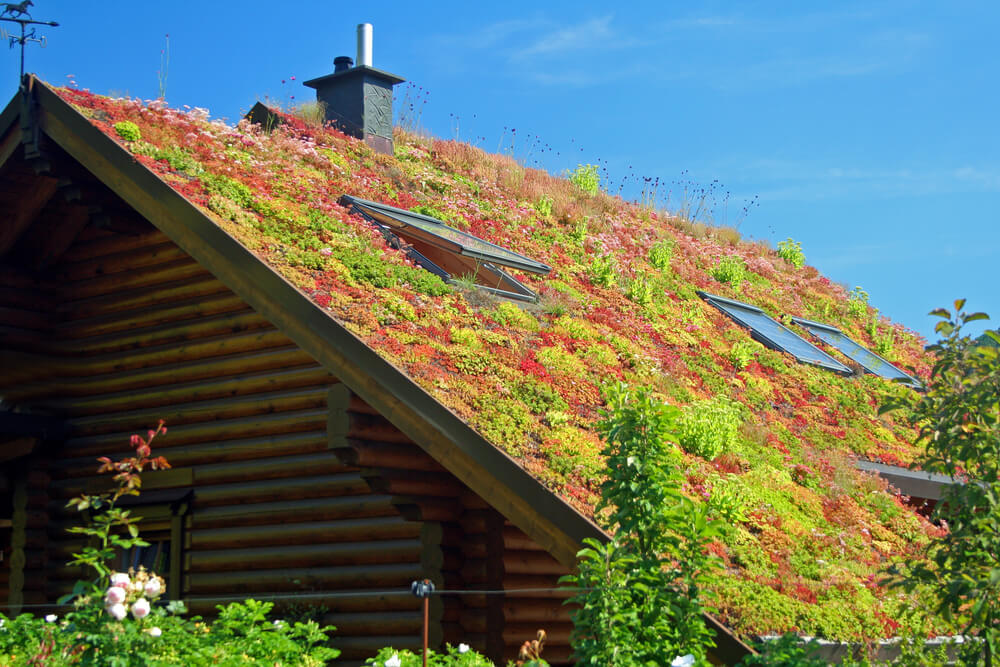
Green roofs can be divided into two broad categories: extensive and intensive. The difference lies in the number of plants that the system can support, the thickness of the substrate, and the size and density of the plants.
Extensive green roofs can hold up to 25 lbs of vegetation per square foot, while intensive roofs can support up to 150 lbs per square foot. The amount of work required to maintain and care for these roofs also differs significantly.
Caring for your living roof
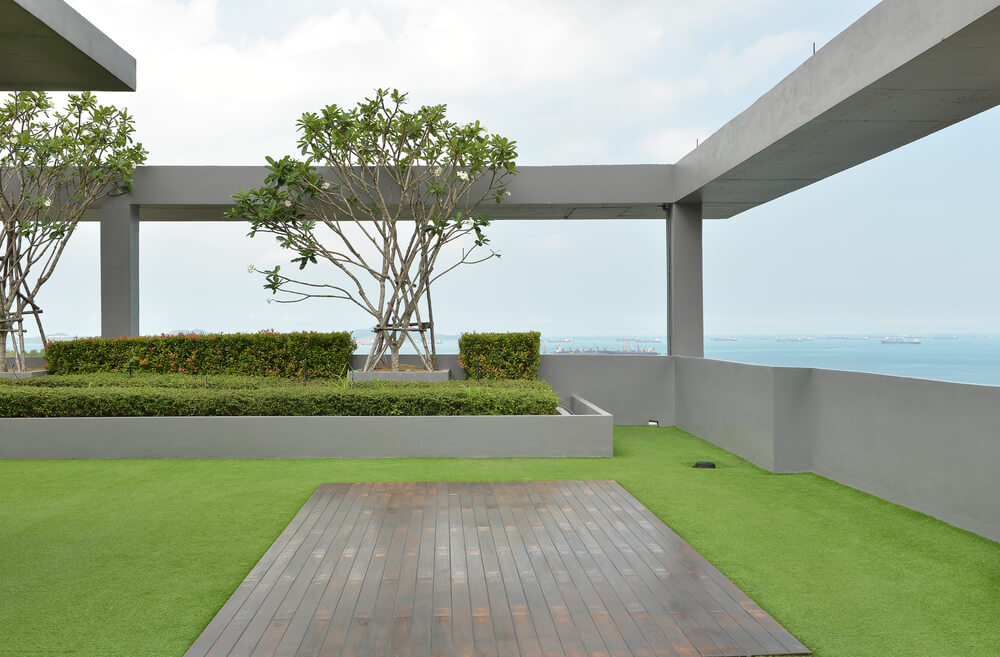
Intensive green roofs need a lot of rigorous maintenance, requiring a long-term commitment in order to keep all the plants separate and provide them with adequate care. Essentially, they’re just like any other garden, albeit a little higher up than usual…
Extensive roofs work a bit differently. In this case, the plants are allowed to grow naturally, with very little human interference.
Just like natural wood or forest, extensive green roofs are fairly self-sufficient, needing only annual maintenance to add fertilizer and cut the grass.
Decorative green roofs
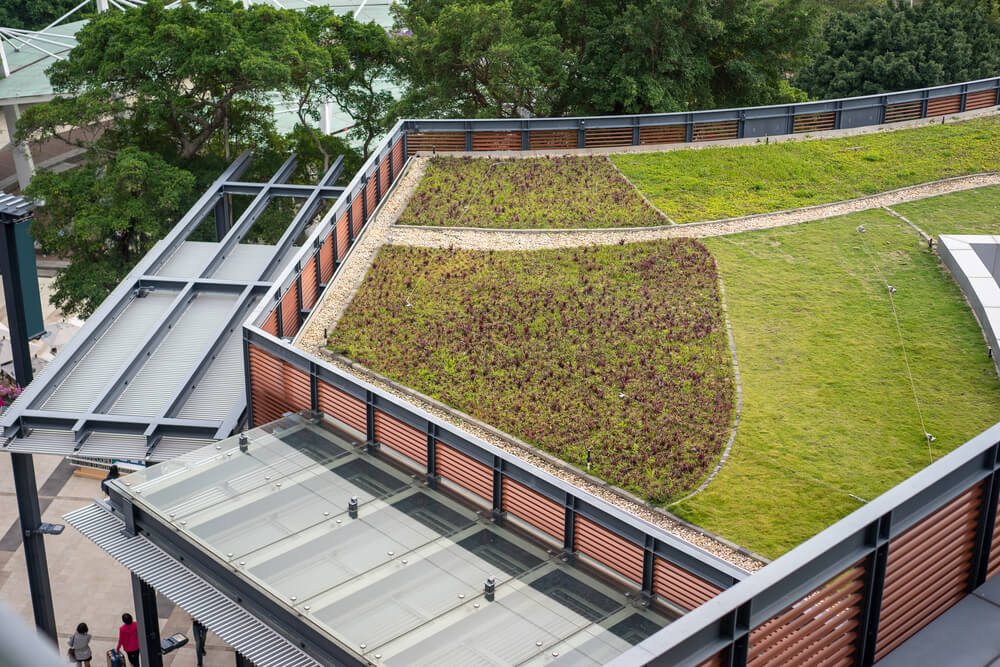
If you decide to install an intensive green roof, you’ll have more freedom to choose plants and flowers that suit a particular aesthetic or decorative style. Extensive roofs are self-sufficient, so there’s not really much choice when it comes to the overall look. So, if you want your green roof to form part of your decor, the intensive system is definitely your best option.
Both types of green roof have a base formed of a layering system. These layers are made up of a series of soils and other materials, which retain nutrients while removing any waste materials.
These layers recreate a natural environment, allowing any excess water to drain away while keeping plants healthy and well-nourished. This is vital for any green roof.
Comprehensive roofs
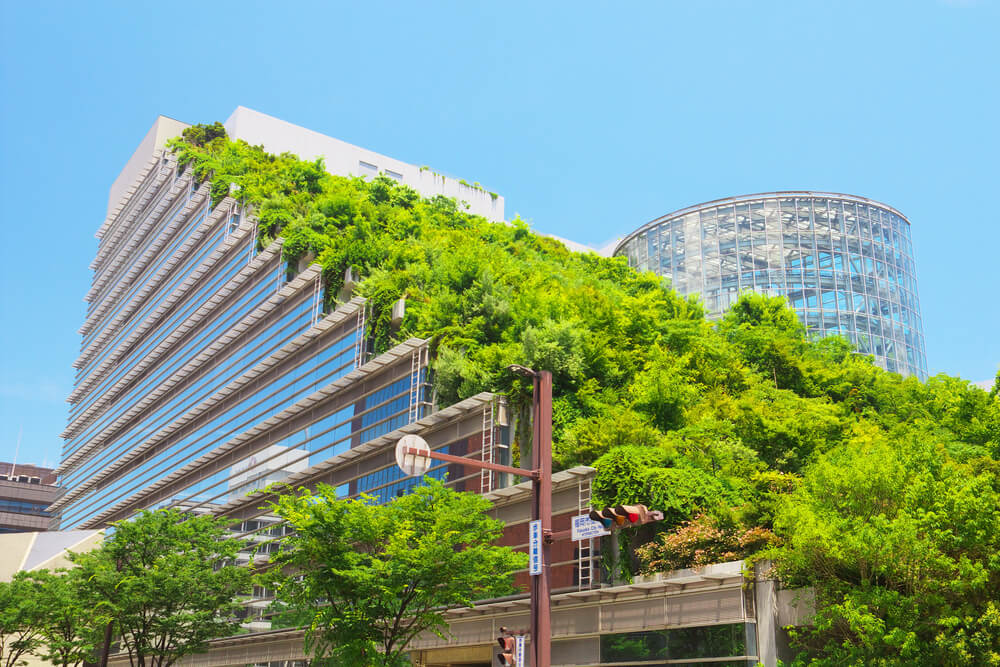
Recent advancements have resulted in a new form of the green roof, known as comprehensive roofing. This system offers the best of both worlds, allowing you to grow both a wide variety and a large number of plants.
Advantages of installing a green roof
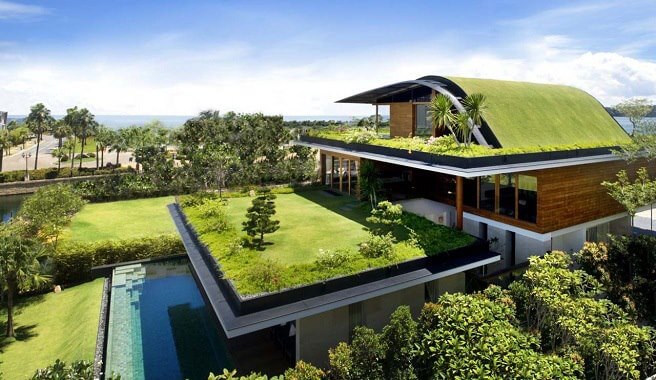
Installing green roofs in city centers and urban areas can have a number of benefits. One advantage is that green roofs reduce the amount of heat that is conducted by buildings. They can also help to improve air quality.
Having a green roof also means there is far less chance of rainwater building up, relieving stress on drains and sewage systems. These living rooftops offer great, natural protection against bad weather.
If you install a living roof on a public building, it can serve as a community garden. At the same time, the plants will help keep smog and dust levels down and remove pollutants and harmful particles from the air.
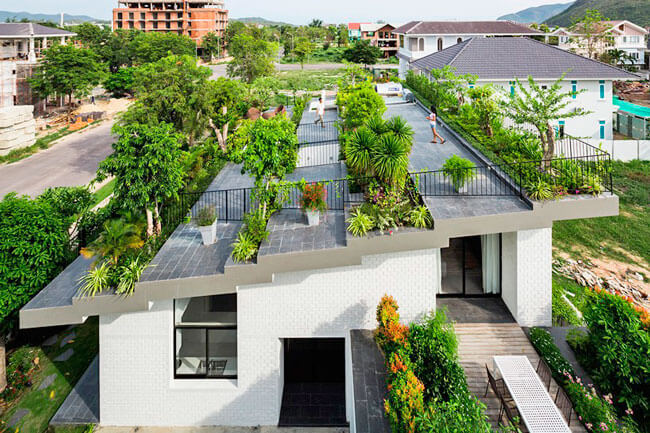
Installing a green roof can also have certain benefits for homeowners. One of the advantages is that they form a natural insulator against both heat and sound. This will help create a quieter, more relaxing home atmosphere.
Living roofs also use waste materials that would otherwise end up in landfills. These eco-friendly roofs will even reduce your energy consumption, and help you do your bit for the planet.
However, there can be certain disadvantages when it comes to having a green roof. One such disadvantage is the cost: they represent a sizeable investment, and you’ll need to take out insurance. This is essential, especially if you live in areas where storms or droughts are common.
Green roofs, otherwise known as living roofs, are added to the roof of a house or other building and used for growing plants. Depending on the type of system you install, the plants may be modular, or have drainage layers. However, all green roofs share a number of common features, which we’ll discuss in this article.
Types of green roofs

Green roofs can be divided into two broad categories: extensive and intensive. The difference lies in the number of plants that the system can support, the thickness of the substrate, and the size and density of the plants.
Extensive green roofs can hold up to 25 lbs of vegetation per square foot, while intensive roofs can support up to 150 lbs per square foot. The amount of work required to maintain and care for these roofs also differs significantly.
Caring for your living roof

Intensive green roofs need a lot of rigorous maintenance, requiring a long-term commitment in order to keep all the plants separate and provide them with adequate care. Essentially, they’re just like any other garden, albeit a little higher up than usual…
Extensive roofs work a bit differently. In this case, the plants are allowed to grow naturally, with very little human interference.
Just like natural wood or forest, extensive green roofs are fairly self-sufficient, needing only annual maintenance to add fertilizer and cut the grass.
Decorative green roofs

If you decide to install an intensive green roof, you’ll have more freedom to choose plants and flowers that suit a particular aesthetic or decorative style. Extensive roofs are self-sufficient, so there’s not really much choice when it comes to the overall look. So, if you want your green roof to form part of your decor, the intensive system is definitely your best option.
Both types of green roof have a base formed of a layering system. These layers are made up of a series of soils and other materials, which retain nutrients while removing any waste materials.
These layers recreate a natural environment, allowing any excess water to drain away while keeping plants healthy and well-nourished. This is vital for any green roof.
Comprehensive roofs

Recent advancements have resulted in a new form of the green roof, known as comprehensive roofing. This system offers the best of both worlds, allowing you to grow both a wide variety and a large number of plants.
Advantages of installing a green roof

Installing green roofs in city centers and urban areas can have a number of benefits. One advantage is that green roofs reduce the amount of heat that is conducted by buildings. They can also help to improve air quality.
Having a green roof also means there is far less chance of rainwater building up, relieving stress on drains and sewage systems. These living rooftops offer great, natural protection against bad weather.
If you install a living roof on a public building, it can serve as a community garden. At the same time, the plants will help keep smog and dust levels down and remove pollutants and harmful particles from the air.

Installing a green roof can also have certain benefits for homeowners. One of the advantages is that they form a natural insulator against both heat and sound. This will help create a quieter, more relaxing home atmosphere.
Living roofs also use waste materials that would otherwise end up in landfills. These eco-friendly roofs will even reduce your energy consumption, and help you do your bit for the planet.
However, there can be certain disadvantages when it comes to having a green roof. One such disadvantage is the cost: they represent a sizeable investment, and you’ll need to take out insurance. This is essential, especially if you live in areas where storms or droughts are common.







